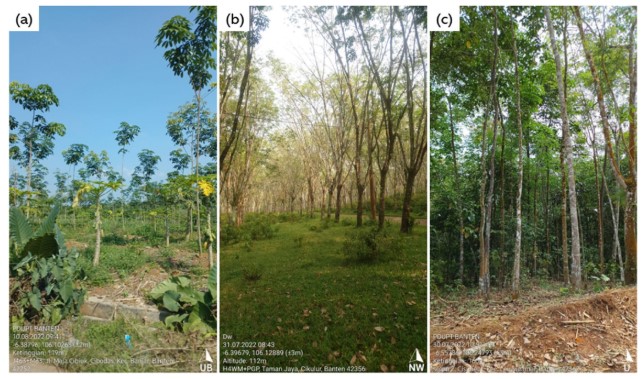Estimating the girth distribution of rubber trees using support and relevance vector machines
 Author: Bambang Hendro Trisasongko, Dyah Retno Panuju, Rizqi I’anatus Sholihah, Nur Etika Karyati
Author: Bambang Hendro Trisasongko, Dyah Retno Panuju, Rizqi I’anatus Sholihah, Nur Etika Karyati
Abstract: Within the context of agricultural planning, spatial data have played a crucial role, replacing conventional tabular-based data. Plantation, one of the key agricultural commodities, has been of interest since they occupy large coverage of landmass. Primary data supplies have been provided by space agencies, allowing detailed, updated satellite data to monitor this resource, with the aid of machine learning. This article discusses the opportunity of implementing support vector machines (SVM) and relevance vector machines (RVM) for estimating tree girth as a predictor of tree maturity and plantation productivity. The current research indicated that baseline SVR models were unable to yield a sufcient outcome. The complexity of the problem suggested that only the radial basis function (RBF) kernel was promising. Tuning SVM on linear and polynomial kernels did not enhance the quality of the models, although it appeared that the phenomenon of diminishing return existed. After parameter tuning, this research yielded a model with root mean squared error (RMSE) around 8.5 cm with R2 around 0.69. Although it was recently introduced, RVM with the same RBF kernel did not yield a sufcient model with RMSE about 52 cm. This concludes that the optimal model should be sought through examining a wide range of machine learning approaches.
Keywords: Circumference, Jungle rubber, Plantation, Relevance vector machine, Support vector machine, Tuning
Journal URL: https://link.springer.com/article/10.1007/s12518-024-00550-1
